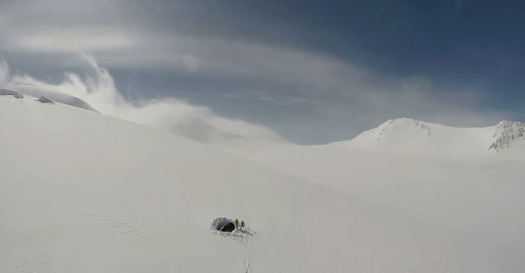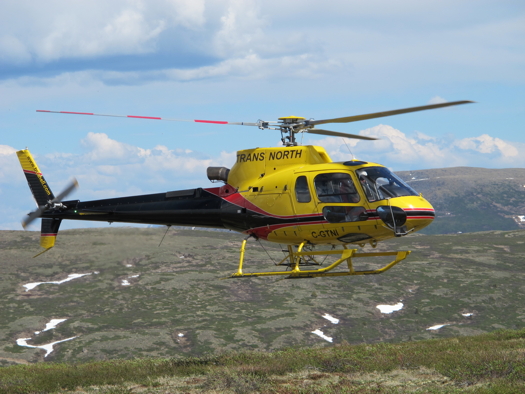
Trans North Helicopters used its AS350 B3 (H125) AStar for the recent high altitude rescue on Mount Logan. Trans North Photo
The combination of a skillful pilot, capable helicopter, and careful planning resulted in the successful rescue of three climbers from approximately 17,500 feet on Canada’s Mount Logan last week.
Trans North Helicopters pilot Dion Parker performed the June 11 rescue, which involved three round trips from a staging area near the base of the mountain to the extraction site. At one point in the mission, Parker flew his Airbus Helicopters AS350 B3 (now H125) AStar as high as 20,000 feet to reach the site in difficult wind conditions.
Located in Kluane National Park, Yukon, the 19,551-foot (5,959-meter) Mount Logan is the highest mountain in Canada and the second-highest peak in North America, only 686 feet lower than Alaska’s Denali.
According to Kluane National Park’s Craig McKinnon, the three stranded climbers were all experienced mountaineers who had been on the summits of Denali and Mount Everest “numerous times.” After summiting Mount Logan on June 2, however, they became stranded in severe weather while descending via the King Trench route.
“They experienced a weather system that brought in over a foot of snow during a day and at some points gusts up to 160 kilometers an hour,” McKinnon told CBC Yukon in an interview, noting that at one point the climbers took refuge in a snow cave for two days. “Snow and winds actually sealed the entrance to their cave, and it was like a two-meter dig-out, out of that.”
Even then, the climbers attempted to resume their descent, but were hampered by winds, whiteout conditions, and, for one climber, the onset of frostbite. “Just surviving in these conditions at this altitude took a toll on them,” McKinnon said.
Parks Canada was informed of the climbers’ situation in the early hours of June 9, and immediately began mobilizing a response. The original intent was simply to provide the climbers with food and fuel, but persistent bad weather prevented assistance for another two days, making a rescue operation necessary.

Video taken during the rescue operation shows the climbers waiting at the extraction site after the weather finally broke. Parks Canada Image
According to Trans North Helicopters operations manager Clint Walker, Trans North has provided rescue helicopter services to the Yukon and Kluane National Park since the company’s inception in 1967. Trans North keeps a high-altitude-equipped Bell 206L4 LongRanger at its nearby Haines Junction base, but for this mission elected to fly its dual-hydraulic-equipped AStar in from Whitehorse to provide the necessary altitude capability. The LongRanger remained on standby in the event assistance was required.
Parker, who is the Haines Junction base manager, is a qualified mountain rescue pilot trained to Parks Canada standards for Class D human external loads. On this occasion, however, he was able to land and load the climbers at the rescue site. The frostbitten climber was evacuated first, followed by the remaining climbers and, on a third trip, their climbing gear. After commencing around 5 p.m. local time on June 11, the operation was successfully concluded at approximately 10 p.m. The climbers are reportedly doing well following their ordeal.
McKinnon said that Kluane National Park received assistance in formulating the high-altitude rescue plan from Parks Canada visitor safety specialists out of Banff and Jasper, Alta., as well as U.S. National Park Service representatives from Denali National Park. “All the pre-planning really made for a smooth and successful rescue in the end,” he told CBC Yukon.
“Having trained and experienced Parks Canada staff close at hand, and a suitable helicopter capable of completing the task, helped ensure a very positive outcome to this mission,” Walker told Vertical.
Trans North Helicopters performed another high-profile rescue in Kluane National Park in May 2013, when Parker flew two international climbers off Mount Eaton after they, too, became stranded in poor weather.
“More often than not, [Parks rescues] involve lower-elevation response, but when required, we are able to respond pretty much to the top of the tallest mountain in Canada,” Walker said.
Video from the rescue can be viewed on the Parks Canada Yukon page on Facebook.









